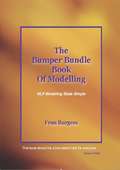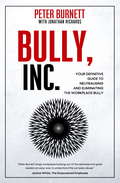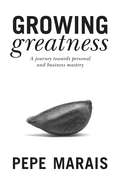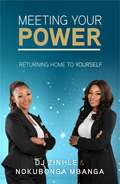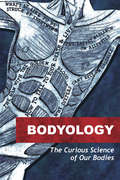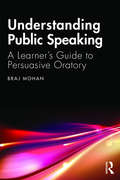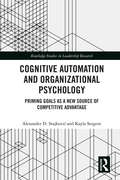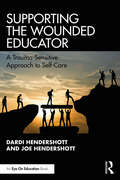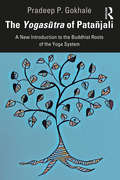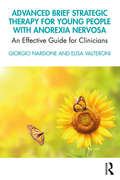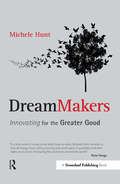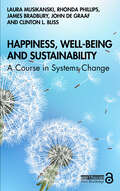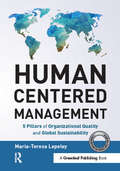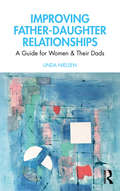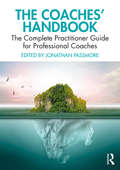- Table View
- List View
The Bumper Bundle Book of Modelling: NLP Modelling Made Simple
by Fran BurgessA Neurolinguistic Programming textbook which focusses on the core activity of NLP - modelling. It covers the thinking behind NLP modelling, presents an extensive range of modelling methodologies and skills, offers applications of modelling, and provides specific details for model and technique construction.
BULLY, INC.: Your Guide to Neutralising and Eliminating the Workplace Bully
by Peter BurnettWe have all worked for, or are working at Bully, Inc. An unforgiving workplace environment where the tyranny of the few is allowed to pollute the work experience of the many.It costs. From the estimated £20 billion lost to the economy alone each year in the UK to the day in day out rat-on-a-wheel drudgery and fear.In this game-changing book, author Peter Burnett dissects the phenomenon of Workplace Bullying ― which impacts one in three of the workforce. He offers a road map out of this infectious 21st Century workplace malaise. A malaise that stretches from the smallest offices to the Houses of Parliament ― itself charged with legislating on behaviour in the workplace ― to the boardrooms of the very biggest global players.BULLY, INC. shows how as a society we are now using technology to bully and how media itself can be charged as guilty in its preoccupation with celebrities ― visible in their own workplaces.BULLY, INC. answers your fundamental questions about workplace bullying:* What is and what is not bullying at work?* Why am I the target?* Why and how do bullies get away with it?* What role do bystanders play?BULLY INC. is the definitive guide to neutralising and eliminating the bully in your workgroup.If you’re working at BULLY, INC. right now this book will help you.BULLYING affects one in three of the work force. Right now you are probably sharing an office with at least one person whose work life is being terrorised and dreads the everyday work experience. The economic cost of this is put at £20 billion per annum. Why? Because an unhappy, dysfunctional workplace is an inefficient one.BULLY, INC. reveals:* The range of health ailments associated with bullying at work impacting both mental and physical health;* The strategies for coping with bullying and ultimately routes to eliminating it altogether;* The identity of a major UK employer with a global footprint as a template for how to structure work relationships and how by offering a receptive and connected working environment bullying is virtually eliminated;* How new thinking about bullying controversially frames the bully as much as a target, as the bullied;* How one generation in particular has got it right in terms of their tolerances of bullying behaviours and how they are on course to neuter the issue for society generally;* How bullying permeates showbiz in the phenomenon of ‘Bullytainment’ - where some celebs find themselves subject to online trolling which in extreme cases has caused some to consider taking their own lives.
Growing Greatness: A Journey Towards Personal and Business Mastery
by Pepe MaraisPepe Marais began his entrepreneurial journey as a newspaper delivery boy at the age of twelve. After finishing high school in 1986, he spent two years in the army completing what was then compulsory national service. On his way home at the end of his service, while waiting for a Vlossie at an airforce base in Rundu, he had a chance encounter with a graphic artist, an event which would change the course of his life. Pepe's latent talent for art was developed and honed at an art school in Cape Town, where he finished top of his class each year, which in turn would lead him to discover his passion for advertising. After six years in the industry he and his business partner Gareth Leck launched their enterprising Take-Away Advertising Agency and success seemed a foregone conclusion.However, in 2006, Pepe's business career and personal life began to disintegrate. At the lowest point of his life, he would discover a fundamental insight that became the foundation on which he would rebuild everything. It would also inspire the development of his Purpose for Business methodology and his deep interest in unlocking both human and business potential.While Growing Greatness contains many lessons for aspiring entrepreneurs, perhaps what is more important is the deep wisdom it offers. Through his growing awareness of what purpose means in both business and personal terms, Pepe points the way to growing your own greatness.
Meeting Your Power: Returning Home To Yourself
by DJ Zinhle Nokubonga MbangaA message for today’s women; it is time for you to step into your starring role.Being empowered is a choice; it is a daily decision that defines who we are and it is accessible to everyone.Meeting Your Power is a reminder that power is inside all of us, and that your journey to empowerment begins with you.This is the story of two remarkable women, DJ Zinhle and Nokubonga Mbanga, who have experienced life’s ups and downs. They share the lessons learnt on their life journeys through inspirational words - words that will invoke your inner power, words that will help you return home to your essence, and words that will encourage you to return to the source of your power, the power that we are all born with.Being an empowered woman is more than just doing, it is also about being. This book will show you how to look at power differently and will help you to unleash and harness your inner power with honest, simple and practical examples and advice. Most importantly, you will learn that your greatest empowerment project is being authentically you, every day.Prepare to meet your power and radiate your possibilities.Let’s ignite a movement of women and girls who understand the higher meaning of love for oneself and others, who appreciate and celebrate our collective growth; who nurture a solid mindset of achievement and who value creating, protecting and preserving our inner peace.Rise and Raise.
Bodyology: The Curious Science of Our Bodies
by Mosaic ScienceEver wondered what it’s like to be hit by lightning or to lose your sense of smell? Heard about the woman saved by bee stings — or the window cleaner who survived a 400ft fall? Originally written for the Wellcome charity, these 16 stories by leading science writers explore the mysteries of the human body. Learn about everything from diets to allergies, hair colour to rare blood, and from allergies to remote surgery. Contents What’s it like to be struck by lightning? Why do we colour hair? The man with the golden blood Why dieters can’t rely on calories 3D printers can now make body parts How to fall from a skyscraper and live to tell the tale The quest to explain miscarriages Seeking a ‘cure’ for male baldness How bee stings saved a woman’s life The global trend for ‘kangaroo’ babies What it means to lose your sense of smell The doctor aiming to end eye pain Could allergies be a defence against noxious chemicals? Why business is going slow on the male pill How virtual reality headsets aid remote surgery Shhh! What exactly is the menopause?
Understanding Public Speaking: A Learner's Guide to Persuasive Oratory
by Braj MohanPublic speaking is a much coveted yet difficult art. This book illustrates the use of various linguistic devices and persuasive strategies with examples from the speeches of powerful orators in history. It systematically draws on the various approaches to public speaking and persuasive discourse to present new insights and techniques. The volume: Critically examines strategies of persuasive oratory. Draws on extensive investigation of a corpus of famous public speeches in history. Focuses on the needs of those who want to brush up their public speaking skills. The volume will be a key reference for aspiring civil servants, lawyers, business and corporate professionals, and politicians. It will be of great interest to scholars of linguistics, and political and business communication.
Understanding Public Speaking: A Learner's Guide to Persuasive Oratory
by Braj MohanPublic speaking is a much coveted yet difficult art. This book illustrates the use of various linguistic devices and persuasive strategies with examples from the speeches of powerful orators in history. It systematically draws on the various approaches to public speaking and persuasive discourse to present new insights and techniques. The volume: Critically examines strategies of persuasive oratory. Draws on extensive investigation of a corpus of famous public speeches in history. Focuses on the needs of those who want to brush up their public speaking skills. The volume will be a key reference for aspiring civil servants, lawyers, business and corporate professionals, and politicians. It will be of great interest to scholars of linguistics, and political and business communication.
Cognitive Automation and Organizational Psychology: Priming Goals as a New Source of Competitive Advantage (Routledge Studies in Leadership Research)
by Alexander D. Stajkovic Kayla SergentJobs that were once well-defined are now multifaceted. New realities have placed a premium on employee cognitive processing to fulfill complex occupational roles. But human conscious cognitive capacity is limited, making it nearly impossible for employees to keep up without being overloaded. Stajković and Sergent refute the common assumption that technological automation is the only way forward. Instead, they directly tackle the issue of employee cognitive overload by proposing cognitive automation as an alternative solution. The authors present a sampling of cutting-edge research showing that conscious guidance is not required for all goal pursuits; goal-directed behavior at work can be automated via priming of subconscious goals. Building on research in social psychology and organizational behavior, Stajković and Sergent introduce four models to explain how subconscious goals are primed in organizations: •Auto-motive model: Repeated practice with a goal makes cognitive automation possible. •Goal contagion: Observing and inferring goals of others creates cognitive automation. •Means-goal priming: Confidence in your goal pursuit enhances cognitive automation. •A history of reinforcement: Money, feedback, and social recognition used to reinforce goal achievement become associated with the goal, resulting in cognitive automation. The authors canvas a broad range of knowledge concerning the problem of employee cognitive overload in contemporary organizations and rely on multidisciplinary research to propose cognitive automation as a solution that can address it directly. This book is a deep well of valuable information for those interested in solving real work problems with application of science of organizational behavior (SOB).
Cognitive Automation and Organizational Psychology: Priming Goals as a New Source of Competitive Advantage (Routledge Studies in Leadership Research)
by Alexander D. Stajkovic Kayla SergentJobs that were once well-defined are now multifaceted. New realities have placed a premium on employee cognitive processing to fulfill complex occupational roles. But human conscious cognitive capacity is limited, making it nearly impossible for employees to keep up without being overloaded. Stajković and Sergent refute the common assumption that technological automation is the only way forward. Instead, they directly tackle the issue of employee cognitive overload by proposing cognitive automation as an alternative solution. The authors present a sampling of cutting-edge research showing that conscious guidance is not required for all goal pursuits; goal-directed behavior at work can be automated via priming of subconscious goals. Building on research in social psychology and organizational behavior, Stajković and Sergent introduce four models to explain how subconscious goals are primed in organizations: •Auto-motive model: Repeated practice with a goal makes cognitive automation possible. •Goal contagion: Observing and inferring goals of others creates cognitive automation. •Means-goal priming: Confidence in your goal pursuit enhances cognitive automation. •A history of reinforcement: Money, feedback, and social recognition used to reinforce goal achievement become associated with the goal, resulting in cognitive automation. The authors canvas a broad range of knowledge concerning the problem of employee cognitive overload in contemporary organizations and rely on multidisciplinary research to propose cognitive automation as a solution that can address it directly. This book is a deep well of valuable information for those interested in solving real work problems with application of science of organizational behavior (SOB).
Supporting the Wounded Educator: A Trauma-Sensitive Approach to Self-Care
by Dardi Hendershott Joe HendershottEducators today are facing challenges and demands like never before. The tensions between an educator’s calling and the reality of the profession can create a growing sense of compassion fatigue, burnout, and job dissatisfaction. In light of this context, this book brings firsthand knowledge alongside research to encourage, equip, and empower teachers and other K-12 educators to find relief and hope. Taking a trauma-sensitive approach, this important resource will help you navigate the pressures of being an educator, whether you entered into your profession carrying wounds with you, have felt wounded from your work environment, or you are simply someone trying to support others. Packed with doable strategies and suggestions for personal and professional self-care, this book will help you discover a personal journey towards holistic health, job satisfaction, and most importantly, hope!
Supporting the Wounded Educator: A Trauma-Sensitive Approach to Self-Care
by Dardi Hendershott Joe HendershottEducators today are facing challenges and demands like never before. The tensions between an educator’s calling and the reality of the profession can create a growing sense of compassion fatigue, burnout, and job dissatisfaction. In light of this context, this book brings firsthand knowledge alongside research to encourage, equip, and empower teachers and other K-12 educators to find relief and hope. Taking a trauma-sensitive approach, this important resource will help you navigate the pressures of being an educator, whether you entered into your profession carrying wounds with you, have felt wounded from your work environment, or you are simply someone trying to support others. Packed with doable strategies and suggestions for personal and professional self-care, this book will help you discover a personal journey towards holistic health, job satisfaction, and most importantly, hope!
The Yogasūtra of Patañjali: A New Introduction to the Buddhist Roots of the Yoga System
by Pradeep P. GokhaleThis book offers a systematic and radical introduction to the Buddhist roots of Pātañjala-yoga, or the Yoga system of Patañjali. By examining each of 195 aphorisms (sūtras) of the Yogasūtra and discussing the Yogabhāṣya, it shows that traditional and popular views on Pātañjala-yoga obscure its true nature. The book argues that Patañjali’s Yoga contains elements rooted in both orthodox and heterodox philosophical traditions, including Sāṅkhya, Jaina and Buddhist thought. With a fresh translation and a detailed commentary on the Yogasūtra, the author unearths how several of the terms, concepts and doctrines in Patañjali’s Yoga can be traced to Buddhism, particularly the Abhidharma Buddhism of Vasubandhu and the early Yogācāra of Asaṅga. The work presents the Yogasūtra of Patañjali as a synthesis of two perspectives: the metaphysical perspective of Sāṅkhya and the empirical–psychological perspective of Buddhism. Based on a holistic understanding of Yoga, the study explores key themes of the text, such as meditative absorption, means, supernormal powers, isolation, Buddhist conceptions of meditation and the interplay between Sāṅkhya and Buddhist approaches to suffering and emancipation. It further highlights several new findings and clarifications on textual interpretation and discrepancies. An important intervention in Indian and Buddhist philosophy, this book opens up a new way of looking at the Yoga of Patañjali in the light of Buddhism beyond standard approaches and will greatly interest scholars and researchers of Buddhist studies, Yoga studies, Indian philosophy, philosophy in general, literature, religion and comparative studies, Indian and South Asian Studies and the history of ideas.
The Yogasūtra of Patañjali: A New Introduction to the Buddhist Roots of the Yoga System
by Pradeep P. GokhaleThis book offers a systematic and radical introduction to the Buddhist roots of Pātañjala-yoga, or the Yoga system of Patañjali. By examining each of 195 aphorisms (sūtras) of the Yogasūtra and discussing the Yogabhāṣya, it shows that traditional and popular views on Pātañjala-yoga obscure its true nature. The book argues that Patañjali’s Yoga contains elements rooted in both orthodox and heterodox philosophical traditions, including Sāṅkhya, Jaina and Buddhist thought. With a fresh translation and a detailed commentary on the Yogasūtra, the author unearths how several of the terms, concepts and doctrines in Patañjali’s Yoga can be traced to Buddhism, particularly the Abhidharma Buddhism of Vasubandhu and the early Yogācāra of Asaṅga. The work presents the Yogasūtra of Patañjali as a synthesis of two perspectives: the metaphysical perspective of Sāṅkhya and the empirical–psychological perspective of Buddhism. Based on a holistic understanding of Yoga, the study explores key themes of the text, such as meditative absorption, means, supernormal powers, isolation, Buddhist conceptions of meditation and the interplay between Sāṅkhya and Buddhist approaches to suffering and emancipation. It further highlights several new findings and clarifications on textual interpretation and discrepancies. An important intervention in Indian and Buddhist philosophy, this book opens up a new way of looking at the Yoga of Patañjali in the light of Buddhism beyond standard approaches and will greatly interest scholars and researchers of Buddhist studies, Yoga studies, Indian philosophy, philosophy in general, literature, religion and comparative studies, Indian and South Asian Studies and the history of ideas.
Advanced Brief Strategic Therapy for Young People with Anorexia Nervosa: An Effective Guide for Clinicians
by Giorgio Nardone Elisa ValteroniThis important new book details a strategic and systemic model for short-term therapy with adolescent sufferers of anorexia nervosa, a psychopathology that seduces patients into starvation as doctors and family look on with increasing desperation. Supported by the successful treatment of hundreds of cases over the past 30 years, the book is the culmination of a long-term intervention programme developed at the Strategic Therapy Centre of Arezzo, Italy. It begins by outlining the range of different eating disorders, before identifying the specific characteristics that adolescents with anorexia present. The variations of the pathology are then discussed. Not all patients present with the same symptoms; some sufferers over-exercise while others binge eat or self-harm. Substance abuse is also common, either with diuretics or chemicals; others self-induce vomiting. The therapeutic strategy will, of course, differ for each patient. Accessibly written throughout, the book concludes with two cases studies – complete with full transcripts – which illustrate the therapeutic process that allowed the patient to change their patterns of thinking, and the accompanying behaviours. An insightful and invaluable work on this vital topic, the book will be essential reading for any professional working with adolescents presenting with anorexia, as well as the families of sufferers.
Advanced Brief Strategic Therapy for Young People with Anorexia Nervosa: An Effective Guide for Clinicians
by Giorgio Nardone Elisa ValteroniThis important new book details a strategic and systemic model for short-term therapy with adolescent sufferers of anorexia nervosa, a psychopathology that seduces patients into starvation as doctors and family look on with increasing desperation. Supported by the successful treatment of hundreds of cases over the past 30 years, the book is the culmination of a long-term intervention programme developed at the Strategic Therapy Centre of Arezzo, Italy. It begins by outlining the range of different eating disorders, before identifying the specific characteristics that adolescents with anorexia present. The variations of the pathology are then discussed. Not all patients present with the same symptoms; some sufferers over-exercise while others binge eat or self-harm. Substance abuse is also common, either with diuretics or chemicals; others self-induce vomiting. The therapeutic strategy will, of course, differ for each patient. Accessibly written throughout, the book concludes with two cases studies – complete with full transcripts – which illustrate the therapeutic process that allowed the patient to change their patterns of thinking, and the accompanying behaviours. An insightful and invaluable work on this vital topic, the book will be essential reading for any professional working with adolescents presenting with anorexia, as well as the families of sufferers.
DreamMakers: Innovating for the Greater Good
by Michele HuntDreamMakers: Innovating for the Greater Good profiles stories of businesses, cross-sector initiatives and movements and whole communities that are collaborating to create a flourishing world. They all share attitudes and beliefs that transcend: who they are, where they live, or their individual circumstances. The book provides a new definition of success, shares the stories of a number of businesses and communities and examines how the people that lead these successful organizations have made a significant difference. Stories come from people based in very different types of industries and sectors, such as Waka Waka, a company that is helping to address 'energy poverty' for millions of families across the globe, Menlo Innovations, a socially innovative technology company which embeds 'Joy' as a business proposition, and the hugely successful cross-sector global movement, B Corporation.These people share how they are innovating for the greater good and making their personal hopes and dreams come true. They share their results and what they have learned. Their compelling stories are instructive as well as inspirational. They share the defining moments in their lives that shaped the insights, perspectives and the decisions that lead them on their journey. They go into detail about the actions they are taking to help transform their organizations, communities to enable them to innovate for the greater good. They show us that by taking personal responsibility to change our lives, businesses and our communities, we contribute to changing our world.
DreamMakers: Innovating for the Greater Good
by Michele HuntDreamMakers: Innovating for the Greater Good profiles stories of businesses, cross-sector initiatives and movements and whole communities that are collaborating to create a flourishing world. They all share attitudes and beliefs that transcend: who they are, where they live, or their individual circumstances. The book provides a new definition of success, shares the stories of a number of businesses and communities and examines how the people that lead these successful organizations have made a significant difference. Stories come from people based in very different types of industries and sectors, such as Waka Waka, a company that is helping to address 'energy poverty' for millions of families across the globe, Menlo Innovations, a socially innovative technology company which embeds 'Joy' as a business proposition, and the hugely successful cross-sector global movement, B Corporation.These people share how they are innovating for the greater good and making their personal hopes and dreams come true. They share their results and what they have learned. Their compelling stories are instructive as well as inspirational. They share the defining moments in their lives that shaped the insights, perspectives and the decisions that lead them on their journey. They go into detail about the actions they are taking to help transform their organizations, communities to enable them to innovate for the greater good. They show us that by taking personal responsibility to change our lives, businesses and our communities, we contribute to changing our world.
Happiness, Well-being and Sustainability: A Course in Systems Change
by Laura Musikanski Rhonda Phillips James Bradbury John de Graaf Clinton L. BlissHappiness, Well-being and Sustainability: A Course in Systems Change is the first textbook bridging the gap between personal happiness and sustainable social change. The book provides a guide for students to increase their skills, literacy and knowledge about connections between a sense of well-being and systems change. Further, it can help students live a life that brings them happiness and contributes to the well-being of others and the sustainability of our planet. The book is presented in seven chapters covering the subjects of systems thinking, personal and societal values, measuring happiness, human needs, ecological sustainability and public policy. In addition, each section includes engaging exercises to empower students to develop their own ideas, prompts for group discussion, suggestions for additional research and an extensive list of resources and references. The book is written in the context of systems thinking with a style that is approachable and accessible. Happiness, Well-being and Sustainability provides essential reading for students in courses on happiness, social change and sustainability studies, and provides a comprehensive framework for instructors looking to initiate courses in this field.
Happiness, Well-being and Sustainability: A Course in Systems Change
by Laura Musikanski Rhonda Phillips James Bradbury John de Graaf Clinton L. BlissHappiness, Well-being and Sustainability: A Course in Systems Change is the first textbook bridging the gap between personal happiness and sustainable social change. The book provides a guide for students to increase their skills, literacy and knowledge about connections between a sense of well-being and systems change. Further, it can help students live a life that brings them happiness and contributes to the well-being of others and the sustainability of our planet. The book is presented in seven chapters covering the subjects of systems thinking, personal and societal values, measuring happiness, human needs, ecological sustainability and public policy. In addition, each section includes engaging exercises to empower students to develop their own ideas, prompts for group discussion, suggestions for additional research and an extensive list of resources and references. The book is written in the context of systems thinking with a style that is approachable and accessible. Happiness, Well-being and Sustainability provides essential reading for students in courses on happiness, social change and sustainability studies, and provides a comprehensive framework for instructors looking to initiate courses in this field.
Human Centered Management: 5 Pillars of Organizational Quality and Global Sustainability (Human Centered Management)
by Maria-Teresa LepeleyWe have never had more freedom to acquire information to make decisions, and organizations have never been so pressed to demonstrate accountability as they communicate with better informed customers and users. People who work IN an organization must also work FOR the organization to accomplish its mission. In this environment, humans are no longer just a resource; they are the reason an organization exists. New constructs are needed to ensure this human-centered paradigm shift.This book sets out the rationale for this shift and stimulates the discussion and the discovery of effective approaches and solutions to innovate for social and environmental good. Written by an expert in quality standards, the book offers a coherent model which synchronizes the organizational structure with the talent required to develop resilient and agile work environments. New strategies to develop talent will be critical, and multidisciplinary approaches from scholars and practitioners from around the world will be required to effectively collaborate and articulate the solutions. The proposition in the book focuses on continuous improvement and interdisciplinary collaboration between scholars and practitioners across different industries, sectors, and national borders in order to address the unavoidable disruptions in the global VUCA environment.
Human Centered Management: 5 Pillars of Organizational Quality and Global Sustainability (Human Centered Management)
by Maria-Teresa LepeleyWe have never had more freedom to acquire information to make decisions, and organizations have never been so pressed to demonstrate accountability as they communicate with better informed customers and users. People who work IN an organization must also work FOR the organization to accomplish its mission. In this environment, humans are no longer just a resource; they are the reason an organization exists. New constructs are needed to ensure this human-centered paradigm shift.This book sets out the rationale for this shift and stimulates the discussion and the discovery of effective approaches and solutions to innovate for social and environmental good. Written by an expert in quality standards, the book offers a coherent model which synchronizes the organizational structure with the talent required to develop resilient and agile work environments. New strategies to develop talent will be critical, and multidisciplinary approaches from scholars and practitioners from around the world will be required to effectively collaborate and articulate the solutions. The proposition in the book focuses on continuous improvement and interdisciplinary collaboration between scholars and practitioners across different industries, sectors, and national borders in order to address the unavoidable disruptions in the global VUCA environment.
Improving Father-Daughter Relationships: A Guide for Women and their Dads
by Linda NielsenImproving Father-Daughter Relationships: A Guide for Women and Their Dads is essential reading for daughters and their fathers, as well as for their families and for therapists. This friendly, no-nonsense book by father-daughter relationships expert, Dr. Linda Nielsen, offers women and their dads a step-by-step guide to improve their relationships and to understand the impact this will have on their well-being. Nielsen encourages us to get to the root of problems, instead of dealing with fallout, and helps us resolve the conflicts that commonly strain relationships from late adolescence throughout a daughter’s adult years. Showing how we can strengthen bonds by settling issues that divide us, her book explores a range of difficult issues from conflicts over money, to the daughter’s lifestyle or sexual orientation, to her parents’ divorce and dad’s remarriage. With quizzes and real-life examples to encourage us to examine beliefs that are limiting or complicating the connection between fathers and daughters, this guide helps us feel less isolated and enables us to create more joyful, honest, enriching relationships.
Improving Father-Daughter Relationships: A Guide for Women and their Dads
by Linda NielsenImproving Father-Daughter Relationships: A Guide for Women and Their Dads is essential reading for daughters and their fathers, as well as for their families and for therapists. This friendly, no-nonsense book by father-daughter relationships expert, Dr. Linda Nielsen, offers women and their dads a step-by-step guide to improve their relationships and to understand the impact this will have on their well-being. Nielsen encourages us to get to the root of problems, instead of dealing with fallout, and helps us resolve the conflicts that commonly strain relationships from late adolescence throughout a daughter’s adult years. Showing how we can strengthen bonds by settling issues that divide us, her book explores a range of difficult issues from conflicts over money, to the daughter’s lifestyle or sexual orientation, to her parents’ divorce and dad’s remarriage. With quizzes and real-life examples to encourage us to examine beliefs that are limiting or complicating the connection between fathers and daughters, this guide helps us feel less isolated and enables us to create more joyful, honest, enriching relationships.
The Coaches' Handbook: The Complete Practitioner Guide for Professional Coaches
by Jonathan PassmoreThis comprehensive practitioner guide provides an accessible evidenced based approach aimed at those new to coaching and who may be undertaking coach training for a certificate in coaching or professional credentials or accreditation with the AC, ICF, EMCC, CMI or ILM. The book will also be useful for those who want to enhance their coaching skills. The Coaches Handbook is edited by Jonathan Passmore, an internationally respected expert and executive coach, with chapters from leading coaching practitioners from across the world. The book is divided into seven sections. Section one examines the nature of coaching, its boundaries, the business case for coaching and how organisations can build a coaching culture. Section two focuses on deepening our self-understanding and understanding our clients, the non-violent communications mindset and the coaching relationship. Section three focuses on the key skills needed for coaching including goal setting, powerful questions, active listening, using direct communications and the role of silence, emotions and challenge in coaching. Section four offers a range of coaching approaches including behavioural, person-centred, solution-focused, psychodynamic, neuroscience, narrative, positive psychology, out-door eco-coaching, team coaching, careers coaching and integrated coaching. Section five focuses on fundamental issues in coaching such as ethics and contracting and evaluation. Section six explores continuous professional development, reflection and the role of supervision, as well as how to establish your coaching business. The final section contains a host of coaching tools which practitioners can use to broaden their practice. Unique in its scope, this key text will be essential reading for coaches, academics and students of coaching. It is an important text for anyone seeking to understand the best practice approaches that can be applied to their coaching practice, including human resources, learning and development and management professionals, and executives in a coaching role.
The Coaches' Handbook: The Complete Practitioner Guide for Professional Coaches (Wiley-blackwell Handbooks In Organizational Psychology Ser.)
by Jonathan PassmoreThis comprehensive practitioner guide provides an accessible evidenced based approach aimed at those new to coaching and who may be undertaking coach training for a certificate in coaching or professional credentials or accreditation with the AC, ICF, EMCC, CMI or ILM. The book will also be useful for those who want to enhance their coaching skills. The Coaches Handbook is edited by Jonathan Passmore, an internationally respected expert and executive coach, with chapters from leading coaching practitioners from across the world. The book is divided into seven sections. Section one examines the nature of coaching, its boundaries, the business case for coaching and how organisations can build a coaching culture. Section two focuses on deepening our self-understanding and understanding our clients, the non-violent communications mindset and the coaching relationship. Section three focuses on the key skills needed for coaching including goal setting, powerful questions, active listening, using direct communications and the role of silence, emotions and challenge in coaching. Section four offers a range of coaching approaches including behavioural, person-centred, solution-focused, psychodynamic, neuroscience, narrative, positive psychology, out-door eco-coaching, team coaching, careers coaching and integrated coaching. Section five focuses on fundamental issues in coaching such as ethics and contracting and evaluation. Section six explores continuous professional development, reflection and the role of supervision, as well as how to establish your coaching business. The final section contains a host of coaching tools which practitioners can use to broaden their practice. Unique in its scope, this key text will be essential reading for coaches, academics and students of coaching. It is an important text for anyone seeking to understand the best practice approaches that can be applied to their coaching practice, including human resources, learning and development and management professionals, and executives in a coaching role.
